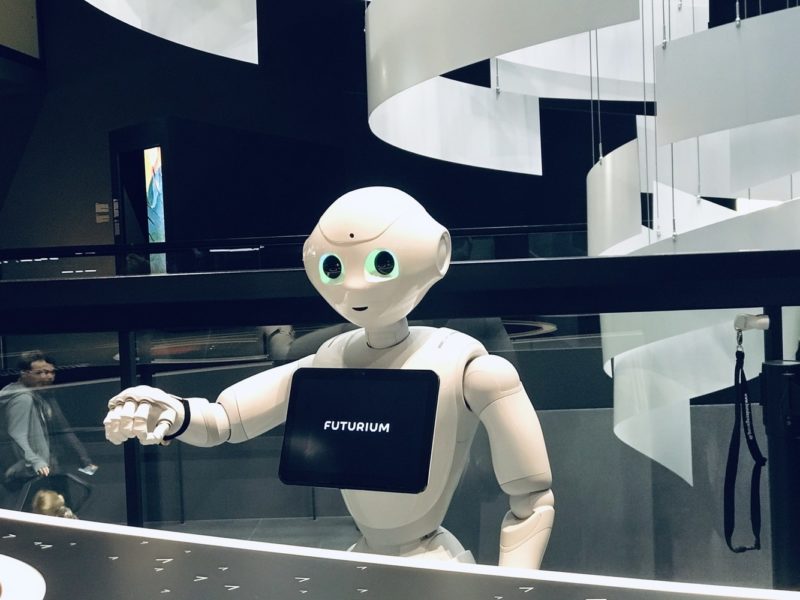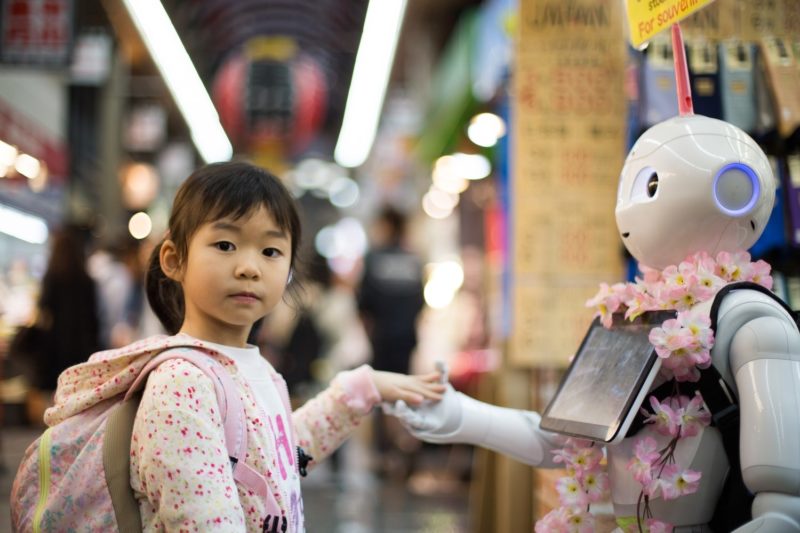We’ve been seeing headlines like this for decades now… Should humans be worried?

Photo courtesy of Alex Knight/Fitore F/Unsplash
The first attempts at machine translation (MT) go back to the 1950s. Predictions were wildly optimistic — humans could be replaced within 10 years or so — but these early MT models failed to bring about any meaningful results and were eventually abandoned. The model was based on bilingual dictionaries, aided by “rules” to properly deal with context and syntax… zillions of rules were needed, far too many to be practical.
For example:
|
|
|
| can refer to the time of year, or as the verb, to add spices to flavour your food. | can refer to a non-fiction book, or as an adjective, something new and unusual. | describes something that is happening now, or as a noun, to the flow of electricity or water in a river. |
There was a long gap before Computer-aided translation (CAT) tools were introduced, a model that still holds its own today. In many ways, the ensuing MT technologies are all based on the same principle — matching source content to parallel translated text — the challenge being as always, context and syntax.
Statistical MT (SMT) depended on frequency of occurrence in existing translated content, while Neural MT (NMT) attempts to reconstruct translated content much as our brain does when learning a new language. When NMT first became available, it did indeed raise the bar quite a bit. In previous versions. And since the advent of AI, even greater improvement.
But is it fair to say it will make humans obsolete?

Photo courtesy of Andy Kelly/Unsplash
Not quite yet, but where only good enough is required, it’s certainly, well… good enough. This has actually been the case for a while now, but it is fair to say that MT is only getting better. Like so many other applications of AI, robotics, and the like, this is actually good news for us humans, as it allows translators to focus on more creative work while machines take care of repetitive, mundane tasks As an English editor, I’d much rather focus on creative content than laborious, boring, and time-consuming tasks that I only want to get done as quickly as possible.
Even before MT, the translation memories (TMs) generated by CAT tools could do much the same. But the speed of MT and lack of human input — yes, TMs have to be managed by humans — provides ever greater efficiencies. There are also many potential applications for translated content that was just too costly to implement before, so even if not perfect, today’s technology provides a level of quality that’s certainly good enough.

Photo courtesy of Lenin Estrada/Unsplash
Some typical examples are…
- Online auctions
- Sellers can easily reach a much broader audience.
- However, for e-commerce sites wishing to enter into new markets with a professional look & feel, human translation will still be required.
- Comments on tourism sites, such as Trip Advisor & Expedia
- Again, user comments can be enjoyed by natives of many other countries, where it would be too impractical and costly to do so otherwise.
- Reviews of all types — restaurants, movies, doctors… even dog food!
- Repetitive content, where here is virtually are virtually no variations in content other than names & dates
- Legal contracts
- Patent applications
- Applications to government agencies for approval of anything from new pharmaceutical drugs to the latest in seatbelts.
- Auto-generated subtitles for sites such as YouTube, VEED and Amara.
- This also involves speech-to-text conversion and time coding, a topic we’ll be covering in the near future.
Most of the translation work we see today requires proper localization to specific markets, where good enough is most certainly not good enough. We’ll be looking into what is required for these types of jobs in future posts, along with other sister technologies that make it all possible.

